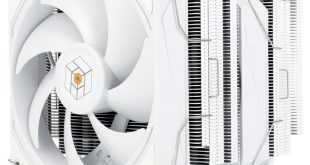Cooler Master and Murata have partnered up once again. This time, instead of a PSU, both companies have co-developed the world's thinnest heat dissipator for electronic devices — a 200μm vapour chamber.
As electronics evolve, the power consumption and heat generated by chips tend to increase, making cooling an important part to consider when designing a new device. To prevent throttling, a cooling system that keeps the temperature below a certain threshold is obligatory.
When designing the cooling system of smaller devices like mobile devices, the challenges increase due to their size. In these cases, using graphite sheets and heat pipes efficiently becomes harder, leading many manufacturers to use vapour chambers.
To solve this problem, Cooler Master and Murata have put together their knowledge to create the world's thinnest dissipator for electronics, a 200μm vapour chamber. Due to its reduced thickness, it can be easily mounted in crowded and small casings, cooling the device's ICs efficiently.
Inside the vapour chamber, there's a cooling liquid dispersed in layers of thin metal foil. The heat generated by the ICs is absorbed by the plate and then transported to the liquid. Following that, the liquid evaporates, and the vapour is dispersed within the chamber, transporting the heat away from its source.
The new dissipator for electronics from Murata and Cooler Master marks the start of their new partnership, suggesting that we may see more co-developed tech in the future.
Discuss on our Facebook page, HERE.
KitGuru says: Putting things into perspective, Murata and Cooler Master's new vapour chamber is just slightly thicker than a human hair.
 KitGuru KitGuru.net – Tech News | Hardware News | Hardware Reviews | IOS | Mobile | Gaming | Graphics Cards
KitGuru KitGuru.net – Tech News | Hardware News | Hardware Reviews | IOS | Mobile | Gaming | Graphics Cards



